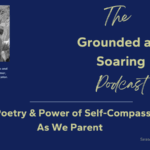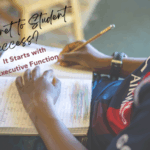Most of us miss the first part of DeCartes’ most famous axiom. He actually said, “dubito, ergo cogito, ergo sum,” which translates, roughly, to “I doubt, therefore I think, I think therefore I am.”
Turns out that the first part is super important. To doubt is to ask questions that pressure-test assumptions and choices.
When it comes to raising children, we parents often sink into bouts of doubt, wondering if we’re doing right by our kids.
Few topics inspire more doubt than choosing a school. Actually, I know of a more doubt-inducing topic: Deciding if we should stick with the school we chose in the first place.
Parents of young children who choose Montessori education often do so because they value how this approach inspires an intrinsic love of learning and how it develops each child’s concentration and independence.
Consciously or unconsciously, families who choose Montessori schools often do so because they seek spaces that are child-centered, intellectually stimulating, and independence inspiring, rather than conventional educational paradigms that prioritize compliance and conformity.
As children grow older, though, it’s not uncommon for parents to feel the pull of conventional paradigms because the familiarity of that kind of education feels comforting.
That which we might resist when kids are young can suddenly become terrifically alluring.
When your child isn’t achieving on all cylinders all the time, it’s tempting to return to what worked for you. If you learned to spell in a traditional class or memorized your multiplication tables in a traditional class, of course you’ll wonder if they’ll become a better speller or a quicker multiplier if they were somewhere else.
That’s the thing about the dominant paradigms we’ve internalized: they fight back.
When the neighborhood elementary school offers earth science, social-emotional learning, geometry, and pre-algebra, it can understandably lead some parents to wonder whether Montessori still makes sense.
They may not realize that those very concepts are integrated robustly, deeply, and naturally into the Montessori curriculum and come alive for students in the exciting ways excellent Montessori educators know how to bring forth.
So, when doubt sets in, here are some strategies to meet the moment.
1. Think about Tomorrow, Not Yesterday
When it comes to education, the governing paradigms are vestiges of the Industrial Revolution, the Enlightenment, and the bureaucracies that arose over the last centuries. In traditional schools, students are cohorted by age, moved through a homogenous sequence of experiences, and assessed on memorization, speed, and compliance.
As Dr. Ken Robinson notes in the video below, schools “are trying to meet the future by doing what they did in the past.” Trust me; it’s worth the 11 minutes to watch his popular and powerful presentation on educational paradigms.
A school designed for tomorrow builds skills, inspires tenacity, and feeds curiosity while also ensuring students learn in deep and enduring ways. It resists the urge to retain the elements of the governing paradigm that are mismatched for the skills kids will need in tomorrow’s world.
Today’s elementary and middle school-aged kids will graduate from high school in the third decade of the 21st century, and if the last years are any preview, their world will continue to twist and turn in ways we can’t predict.
It turns out that the Montessori method is a century-old approach that meets this moment of disruption, distraction, and possibility. Montessori schools use the natural tendencies of children – the desire for order, the impulse to explore, the pursuit of exactness, the hunger for purposeful work – to unleash their potential without snuffing out their innate desire to learn.
2. Look Around
When it comes to education, the sea changes and revolutions are piling up. Chat GPT. The Mastery and Competency movements. The precipitous decline in college enrollment.
Under pressure from any number of external forces, schools are changing. I’ve personally been involved in a number of these initiatives, and now that I’m at Marin Montessori, I can see that schools that innovate often borrow from the Montessori approach because it places the student at the center of education.
Innovative schools offer project-based learning, passion projects, and real-world learning as extras. At Montessori schools, these elements are the program, and as a result, they’re time-tested and well-honed.
3. Be Patient. (The least favorite piece of advice of all time…)
No one likes to be told to calm down, hold still, be patient. And yet! There’s wisdom in the advice.
The Montessori approach harnesses each child’s intrinsic motivations, uses their human tendencies, and draws oxygen to their curiosities and passions.
It lacks the mechanisms for immediate gratification – on purpose. With a friendliness with error and experimentation, children spend their days in prepared environments, supported by trained Guides, and working on the skills and knowledge that they need to thrive.
As a result, Montessori students grow into adults who are knowledgeable, action-oriented, and engaged. Check out our alumni and recent research for more evidence of the value of patience.
4. Start at the End
Here’s a question for all parents: What kind of human beings do we hope to shepherd into the world?
While our answers might vary slightly, most will likely orbit around a few shared attributes: healthy, independent, capable, agile, successful, and kind.
If that’s what we want for our children as they enter adulthood, it’s likely what we also want for them throughout childhood.
If that’s the case, then it makes sense to evaluate the environment and allies that we’ll rely on to help do this work based on their track record of inspiring the kinds of adults we hope to raise while also providing the kinds of childhoods we hope our children experience.
Montessori classes inspire curiosity and feed the questioning minds of children as they grow older. As noted in this recent post from an MMS Guide, research indicates that in many schools, a child’s questioning mind can wither:
…research from Susan Engel, author of The Hungry Mind and a leading international authority on curiosity in children, finds questioning drops like a stone once children start school. When her team logged classroom questions, she found the youngest children in an American suburban elementary school asked between two and five questions in a two-hour period. Even worse, as they got older the children gave up asking altogether. There were two-hour stretches in fifth grade (year 6) where 10 and 11-year-olds failed to ask their teacher a single question.
My guess is that you hope that the young adult whom you’ll meet at the end of this journey will ask questions and seek answers. You likely hope they’ll possess a host of attributes and skills. You probably hope they’re confident, whole, and smart. And that they’re opinionated and informed and passionate and self-possessed – and that they know how to spell and multiply.
That future young adult is the result of a thousand choices and best guesses. As parents, you get a handful of those choices and guesses. Your child will get the others. And then the universe will do its work.
If you work backward, you may just see that your best guess will be to continue to raise them in an environment that matches your values – the same ones that drove you to choose Montessori in the first place.
So, when doubt creeps in, don’t resist it. Instead, use it to assess and seek assurances. We’re confident that you’ll see that Montessori is a time-tested, reliable, and pragmatic choice in a shifting world.

Terry is the Director of Communications and Story at Marin Montessori School. A classroom teacher for 30 years, he manages Grounded and Soaring.





